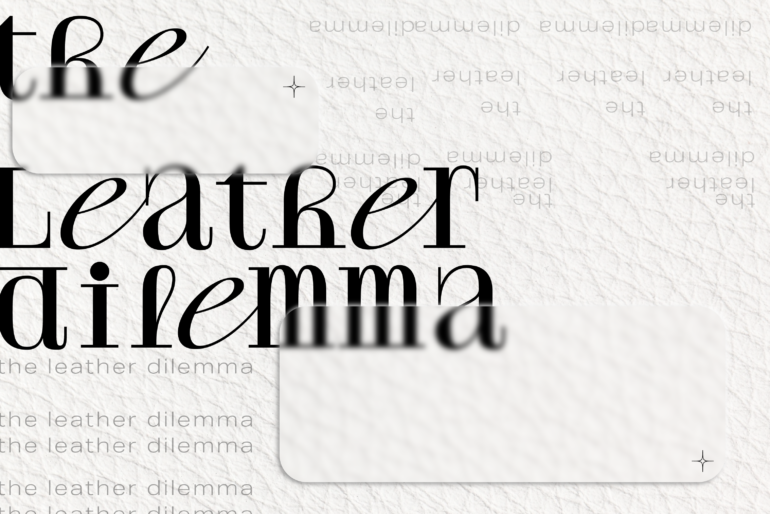My grandmother is my ultimate style inspiration. She’s the source of my respect for clothing and my love of fashion. My earliest memories are of playing with her Chanel and Escada in her flawlessly decorated walk-in closet. Her deepest, darkest wardrobe secret is her collection of genuine leather jackets and purses, which I’ve had to assure her won’t land her in Dante’s seventh circle. Owning leather, especially vintage, doesn’t make you a bad person. In fact, one can debate that real leather may be more sustainable as opposed to alternative leather.
The Leather Dilemma has been a hot topic recently. Should we support vegan leather or real leather? A couple of years ago, animal leather was out of the question. Catalyzed by Stella McCartney’s vendetta against animal cruelty combined with significant technological advancements, pleather had become the preferred material for the past decade. Now with the climate crisis at a frightening precipice, many are discovering that vegan leather actually causes more harm than good. While no animals are hurt during manufacturing, these synthetic garments are discarded faster.
While there are advancements in alternative leathers, such as mushroom and pineapple leather, the ugly truth is that those leathers are coated with plastic finishes, putting a severe dent in the ultimate quest for sustainability. Specifically, mushroom leather is made of mycelium fiber with added plastic for durability. Recently Hermés partnered with MycoWorks to create the Victoria bag with biomedical textile substitutes, hopefully encouraging other luxury brands to use their resources to support alternative methods. While they are theoretically the perfect solution, they aren’t entirely sustainable, considering the costs of transportation, manufacturing, and, well, plastic.
Recently, more people are turning to sustainably sourced leather from local farming and agriculture industries where the cattle aren’t raised solely for leather but as local farm animals for food. Because these organic materials are biodegradable and will last much longer, while it still involves killing an animal, it may be the best environmental option. When sourced from animals that are already going to be killed for the meat industry (which is another can of worms), it’s a much better alternative than only raising animals for their leather. The environmental impact will be enormously lessened as long as it is tanned in the absence of trivalent chromium or formaldehyde. Vegetable tanning is a process that has been used for centuries, and it involves natural plants like oak and spruce. Many up-and-coming brands are implementing these methods and inventing new creative solutions to the climate crisis. Parker Clay, an Ethiopian handbag company, uses recycled water in their tanning process, which is done by hand to reduce the carbon footprint. They also hire at-risk women to create their products, supporting their mission to empower Ethiopian women.
Ultimately the morality of leather is still up in the air. No matter what we do, as long as we keep creating leather products, we are cannot our most sustainable selves. There are downfalls to both animal leather and vegan leather; all we can do is make the best choices possible.
Words by Caroline Tetlow.
Graphic by Fai McCurdy.

